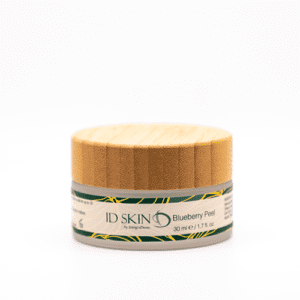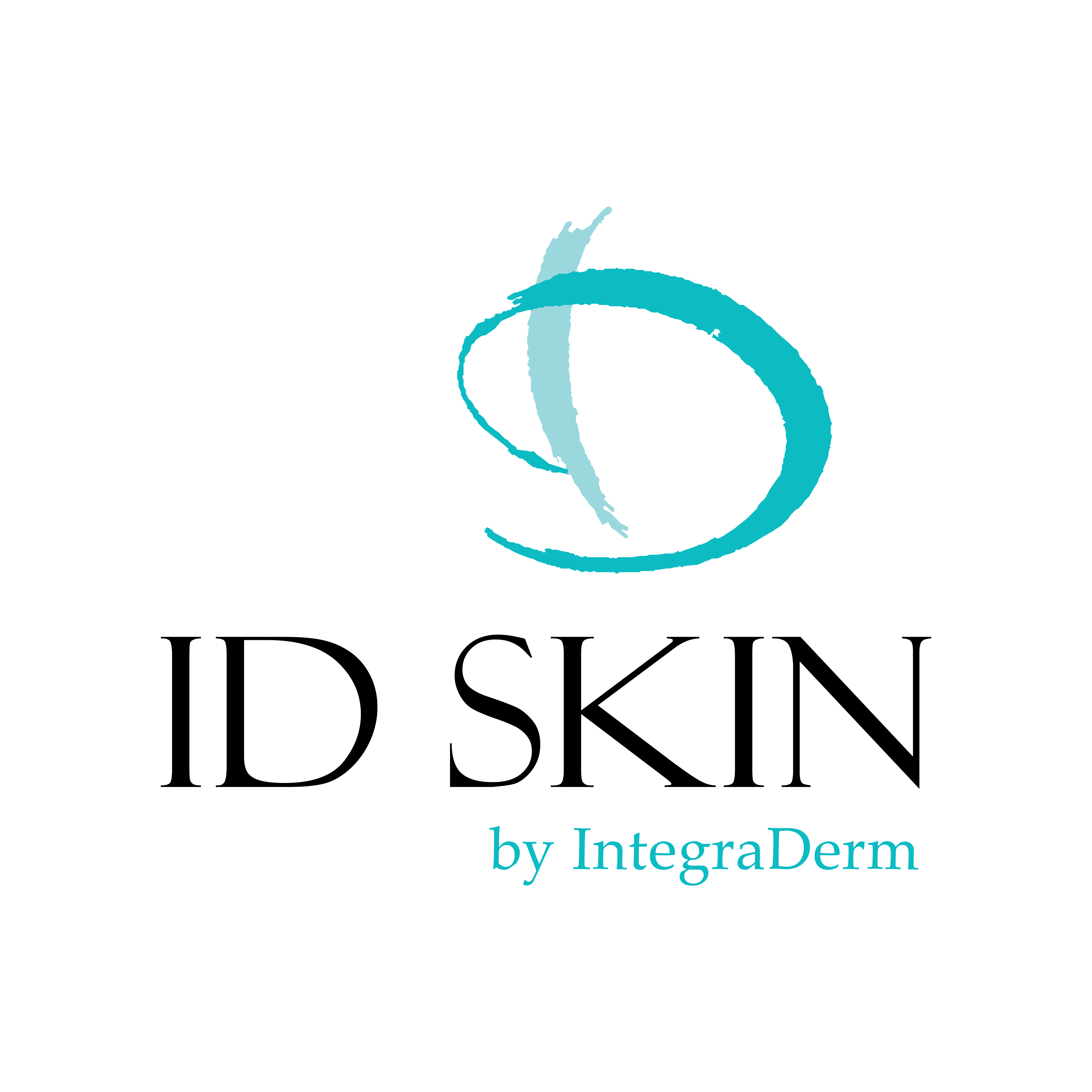Did you know that Mandelic Acid is extracted from fresh fruits and nuts?
ID Skin’s Blueberry Peel contains Mandelic Acid which naturally occurs in nature and can be obtained through the hydrolysis of amygdalin, a common-occurring chemical found in peaches, almonds, and cherries. It helps reduce acne and wrinkles and improves the appearance of uneven skin.
All Peels are not Created Equal
And that is why there are skin care professionals, like you, who make it their job (more like life-long compulsive addiction) to figure out every nuance, every subtlety, every variation, modulation, and gradation of every way to peel off someone’s face. You know the difference between physical, enzymatic, and chemical exfoliation and how to combine them (or not) under steam (or not) to give the outcome that both you and your trusting clients desire; the emergence of more smooth, pink and rosy, radiant skin!
Blueberry Peel Application

Blueberry Peel- Professional Skincare Products for Estheticians
With the application of a chemical peel, the skin is forced to repair itself and new cells with more collagen and elastin are produced. They eventually rise to the surface to make their shining debut – Oh Behold the Glory! Since most people are walking around with about 30 extra layers of dead skin, their removal helps increase penetration of all those fabulous products you are spending hard earned money on. Instead of sitting on top of layers of crusty cells, the products can actually get down to the deeper layers where they do their real work. For all of the different peels that you may choose to use, you’ll need to be trained on how to monitor the acid’s activity level, how to prepare the skin, and quickly neutralize the acid. And as a skin care guru, it will be up to you to decide which chemical you will be choosing to help your clients best attain their skin goals. Of course, there will be a list of dos and don’ts starting about two to three weeks before the actual peel for your clients to follow and you should provide post-peel directions, ideally using ID Skin retail products, including how to cleanse and care for the skin after the treatment.
Lucky for us, the days of harsh chemical peels are somewhat “retro” as data steers technology towards less inflammatory and more effective ways to peel off the old skin. What this means in the spa industry is that less strong chemical peels are being applied in the treatment room as estheticians teach their clients about “no down time” peels and even how to decorticate the dermis in the privacy of their own powder rooms!
Safer Chemicals
A great example of some chemicals that can be used at lower safe levels and still be effective are the Alpha Hydroxy Acids a.k.a AHAs. Alpha Hydroxy Acids were “rediscovered” in the late 1980s for their anti-aging benefits, but they were unknowingly used by early civilizations to enhance the appearance and health of skin. Cleopatra was the sole female to rule the ancient world… all while rocking her beauty routine, which probably included AHAs! Sour milk (Lactic Acid) was used by noble Egyptians as part of their skin rejuvenation regimen while ancient Romans made masques from the sludge on the bottom on wine barrels (Tartaric Acid). Nowadays, AHAs like Glycolic (from sugarcane), Malic (from green apples), and Mandelic (from bitter almonds) are on the scene and available for your back bar to increase stimulation of fresh collagen and elastin production making your clients’ skin firm and toned with that “bounce back” quality of baby skin. AHAs also acts as a humectant, drawing water deep into the dermal layers, making it plump and moist. Plump, firm, moist – what’s not to love?
Less Inflammation
And with our industry becoming a planetary practice with 10 step Korean skin care routines including “snail trail” masks becoming global trends, our attention turns towards skin “of color” as mixed races often yield every imaginable melanin level. And with hyperpigmentation in conjunction with sensitivity being the number one complaint of women with melanin-rich skin, a peel that can help alleviate brown spots while not causing excessive irritation is highly sought after. Thus enter – Mandelic Acid. This unique AHA has a larger molecular size than Glycolic – twice as big to be exact – which makes it penetrate the skin more slowly causing less inflammation than its AHA cousin. It helps with breakouts and the hyperpigmentation that often accompanies pimples on darker skin.
For Licensed Estheticians Only
For licensed estheticians looking to assist clients with skin blemishes, check out the “Blueberry Peel” in our Organic+ Collection here.
This “must-have” peel uses a blend of organic fruits to facilitate skin cell regeneration and protection. Use this bi-weekly to encourage a fresh and even-toned complexion.
Create an account to purchase our Blueberry Peel and for more product details.


